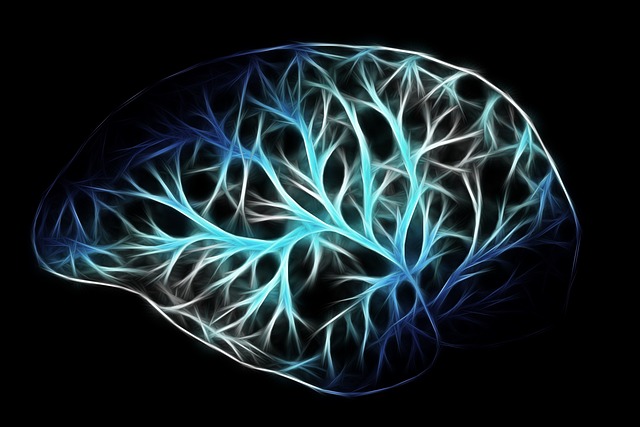Managing chronic headaches can feel overwhelming, especially when standard treatments fall short. This is where innovative approaches, like Multiple Cranial Nerve Blocks (MCNB), may offer new hope for relief.
Headaches often involve pain in both the front (forehead) and back (neck) regions of the head, due to the connections between different nerves. The trigeminal nerve, which affects the face and forehead, and the occipital nerves, which affect the back of the head, play key roles in these headaches.
Multiple Cranial Nerve Blocks (MCNB) involve injecting medication to block the pain signals from several of these nerves, specifically targeting areas like the greater occipital nerve (GON), lesser occipital nerve (LON), and branches of the trigeminal nerve such as the supraorbital and supratrochlear nerves.
This is a different procedure than the typical nerve blocks targeting only the greater occipital nerve (GON).

This illustration from the paper discussed below shows the nerves that may be targeted. Source: Figure 1 in Miller et al. Cephalalgia. 2019
A recent study at London’s National Hospital for Neurology and Neurosurgery explored the benefits of MCNB in patients who suffer from chronic headaches, including chronic migraines, cluster headaches, and other rare headache conditions. These patients had typically tried other treatments, like GON blocks alone, but either saw little success or had diminishing benefits over time.
Key Findings from the Study
- Positive Response: 55.4% of patients reported improvements after 2 weeks of MCNB treatment. For some, like those with cluster headaches, this improvement lasted for several weeks.
- Specific Headache Conditions: The results varied depending on the type of headache. For instance, chronic migraine patients had a 49% response rate, while those with cluster headaches saw a 69.2% response. On the other hand, conditions like new daily persistent headache showed only a brief, 2-week improvement.
- Lasting Effects: Over half of the patients who responded to the treatment saw their benefits last for up to 4 weeks. This suggests that MCNB may be a good option while waiting for long-term preventative treatments to take effect.
- Safety: The side effects of MCNB were minimal, with common complaints being minor discomfort at the injection site, dizziness, or neck pain.
Why MCNB May Help Chronic Migraine Sufferers
For those experiencing frequent migraines that don’t respond well to conventional treatments, MCNB offers a promising alternative. This procedure can quickly provide relief and help reduce the number of migraine days, the intensity of attacks, and overall pain levels.
Moreover, this treatment may be repeated safely over time, allowing patients to avoid the side effects of oral steroids or intravenous medications.
Things to Keep in Mind
 While MCNB appears to be effective for many patients, it’s not a cure. Some patients may experience more significant benefits than others, depending on their headache type. Additionally, although placebo effects could play a role, for those struggling with chronic headaches, any reduction in pain—whether from the treatment itself or a placebo effect—can improve quality of life.
While MCNB appears to be effective for many patients, it’s not a cure. Some patients may experience more significant benefits than others, depending on their headache type. Additionally, although placebo effects could play a role, for those struggling with chronic headaches, any reduction in pain—whether from the treatment itself or a placebo effect—can improve quality of life.
If you’re dealing with chronic headaches or migraines, talking to a neurologist about MCNB may be a worthwhile conversation. It could offer you the chance to break free from the cycle of unrelenting headaches and find a treatment that provides both quick relief and sustained benefits, while you continue to work on addressing the root causes.




This is very interesting. I know that nerves are a major player in headaches so this seems promising.
What an interesting article. I am glad that there has been improvement and progress in helping people with chronic headaches feel better.
Maureen | http://www.littlemisscasual.com
Thank you for this insightful breakdown of MCNB! I found the explanation of how targeting different nerves impacts chronic headaches very enlightening. The minimal side effects you mentioned make it an encouraging option for those who have struggled with conventional treatments. It’s great to see such a thorough exploration of an alternative treatment!
Your post on exploring multiple cranial nerve blocks for chronic headaches is incredibly informative and eye-opening! I appreciate how you break down a complex treatment option in a way that’s easy to understand—thanks for sharing this valuable insight for those seeking relief!
I’ve been struggling with chronic headaches for a while, and it’s great to learn about different treatment options. I really appreciate how you broke down the details about cranial nerve blocks.
My late wife, who suffered from severe chronic pain, would have benefited from this.
This article provides valuable insights into the causes of headaches related to nerve issues. It’s encouraging to see the breakthroughs being made for individuals who suffer from debilitating headaches.
That sounds like an interesting form of treatment and one that would be effective for suffers. With minimal side effects I would say this sounds like a viable treatment given its efficacy.
Everyone would be amazed to learn how the nervous system impacts our bodies. I’ve really enjoyed reading this article, especially the detailed breakdown on chronic headaches! I’m so glad to read more is being done for those who suffer from headaches.
Migraines are the worst! The throbbing pain, sensitivity to light, and nausea make it impossible to function normally. It’s frustrating how they can hit out of nowhere and completely ruin your day. I wouldn’t wish them on anyone!
This sounds like an interesting treatment. I have had chronic headaches and migraines since I was a teen. I’d love to be able to have a way to lessen the frequency of them.
My sister has migraines, and I’ll forward this post to her. How our body works and how many diseases doctors can treat is fascinating.
Interesting. I suffered migraines a lot n the past. I’m open to looking into new treatments, also believe we must try to get to the root cause of what’s causing them.
Wow this is interesting post. I can read about health related. This is very helpful today became there are many cases of migraine.
Very interesting treatment approach. I suffered from chronic migraines in my late teens through early 30s. I still got them at certain times throughout adulthood. I hope they won’t return, but if they do, I will remember this article.
Hhhhmmm….your breakdown of the various nerves and regions of the brain that suffer irritation of this kind, make sense. Perhaps exploring MCNB treatment could work wonders.